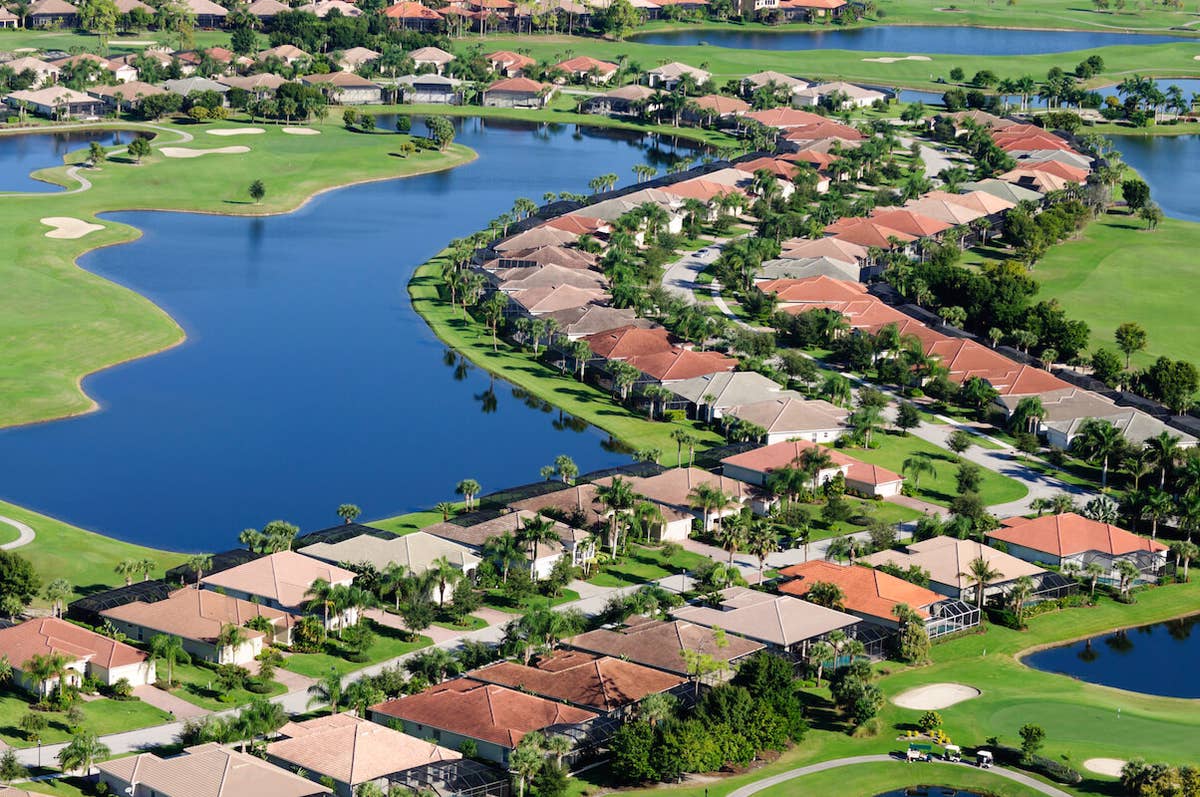Climate change may not be the first thing you think of when it’s time to buy a house, but maybe it should be. The accelerating effects of climate change are creating greater risk for more homeowners than ever before.
How can you decide where to buy property when climate change is a concern? You may want to start by identifying what areas of the country interest you and researching what experts have to say about the impact climate change has had and may have on them. Here’s what we found.
Top 5 safest states for climate change
SafeHome.org compiled data from Climate Central and came up with a Climate Change Rate Index to evaluate states by five major risk categories and their effects: extreme heat, drought, wildfire, coastal flooding, and inland flooding. It found the five states with the lowest Climate Change Rate Index were:
-
Vermont (30).
-
New Hampshire (63).
-
Massachusetts (99).
-
Minnesota (104) .
-
Colorado (106).
The states with the highest risk? Those are:
-
Florida (308).
-
South Carolina (282).
-
Louisiana (281).
-
North Carolina (276).
-
Mississippi (270).
Additionally, the South, with an average Climate Change Index of 226, has the greatest risk. States in the Northeast have the lowest risk, with an average Climate Rate Index of 123, followed by the Midwest (147) and West (166).
Why homebuyers need to think about climate change
Homeowners in catastrophe-prone areas likely know that their insurance premiums are higher than people in other states – and that makes sense. The greater chance an area has of seeing a major disaster, the more costly it is to insure.
However, an NBC News analysis of data from First Street Foundation, a nonprofit organization focused on climate change, provides several disconcerting data points that many homebuyers may want to pay attention to.
For instance, the analysis shows:
-
39 million American homes are vulnerable to some form of climate change-related disaster.
-
One quarter of American homes are overvalued when you factor in climate change.
-
More than 10 million Americans live in counties where every home in the county is at risk of a correction to local insurance rates.
Part of the concern is the number of homes exposed to climate risk. But experts are also worried that insurers will have to either increase their premium or stop selling in certain areas once they gather enough data about climate risk.
From a homebuyer’s perspective, that means you may end up with a house you can’t afford to insure in an area where insurance is of the utmost importance.
This isn’t to say it’s all doom and gloom. The key is understanding what the risk is so you can make smart choices, and that includes knowing what your home insurance policy covers.
Home insurance for properties with climate risk
Once you have an idea of how climate change may impact the area where you want to buy property, you can identify the specific risks you’re most likely to face and determine if a standard homeowners insurance covers your potential catastrophes.
Let’s look at how home insurance covers some of the more common natural disasters:
-
Wind damage, including that from tornadoes, is typically covered. However, if you live in a hurricane-prone area you may have a hurricane deductible and a wind/hail deductible in certain areas.
-
Water damage is usually only covered by home insurance if it’s caused by a sudden, accident, like a burst pipe, or occurs because of damage caused by another covered peril. Flooding from storm surge, overflowing rivers and streams, and other external sources almost always requires flood insurance. Flood insurance may also be required if you live in a flood zone.
-
Wildfires are becoming more and more common, and that’s led some insurers to increase their rates. This may make it difficult for you to find affordable home insurance if you’re in a known wildfire zone.
-
Snow and ice damage is often covered, but you may see your claim denied if you allow snow or ice to build up, and it causes water to seep into your home.
When you find a home you want to buy, ask the real estate agent about climate change and natural disasters common in the area:
-
Will rising ocean levels pose a problem to your land?
-
What drainage features exist to prevent flooding with significant rainfall?
-
Do you have to be concerned about hurricane season each year? If so, in what ways?
-
Is the property in Tornado Alley?
-
Is the property impacted by a hail or wildfire season?
Is climate change a deal breaker to buying a home?
Knowing the facts about climate change and how it might affect a new property doesn’t have to be a deal breaker. But you do need to be fully aware of the risks you face so you can make an educated decision.
There are many things you can do to reduce the potential effects of climate change disasters on your new home. Arm yourself with the data so that you can research mitigation options for your property. In the end, you may still feel it’s worth the risk to buy a dream home, but at least you’ll be prepared for the worst case scenario.


